From branch to bottle, this is sustainable cider making in Quebec.
Throughout the Quebec countryside, it’s not uncommon to stumble upon dozens of apple orchards. Among them are not only those for classic fall apple-picking adventures, but also the iconic bubbly ciders that flood our Marketplace. The first apples are picked at the beginning of September before being pressed and fermented through the winter to be enjoyed in time for early spring.
Quebec cider makers are seasoned players that face all kinds of challenges, including pests (which they handle using pheromone diffusers) and diseases that affect their fruits like apple scab (which they prevent with natural fungicides made up of copper, lime, and sulphur).
Come along on a deep dive into the sustainable cider industry and take a gander at the brewing of dozens and dozens of unique varieties filling our Marketplace cellar every week.
Harvesting.
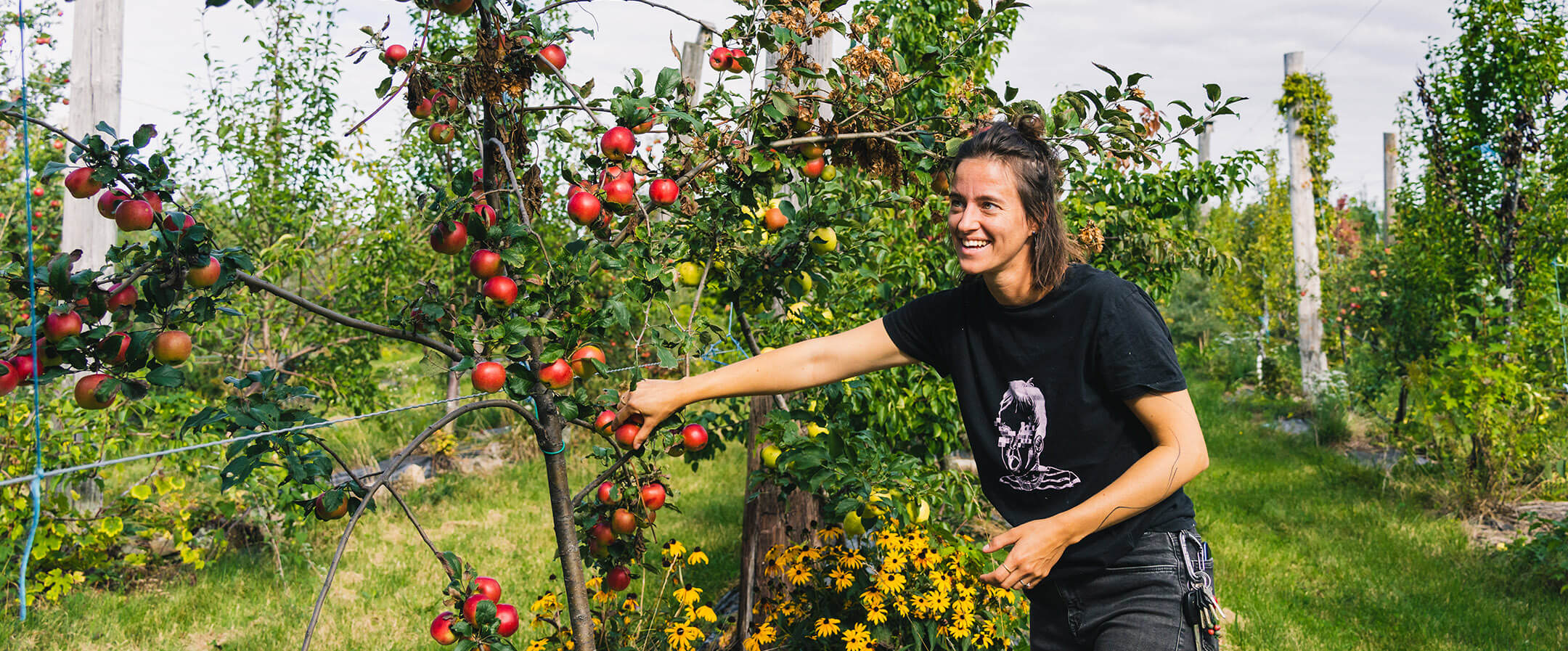
Each cidery has their special touch and for Cidre Sauvageon it’s the diversity found in their orchard, aka 50 different varieties!
To produce cider in Quebec, there are two types of permits: the artisan and the maker. An artisan makes cider from apples they’ve grown themselves, whereas a maker outsources their apples while still creating their own brew. Most of our partners are artisans who own their own orchards but unique on our Marketplace is Fleuri Cidres Biologiques who source their apples from our partner Verger Maia.
Grinding and pressing.
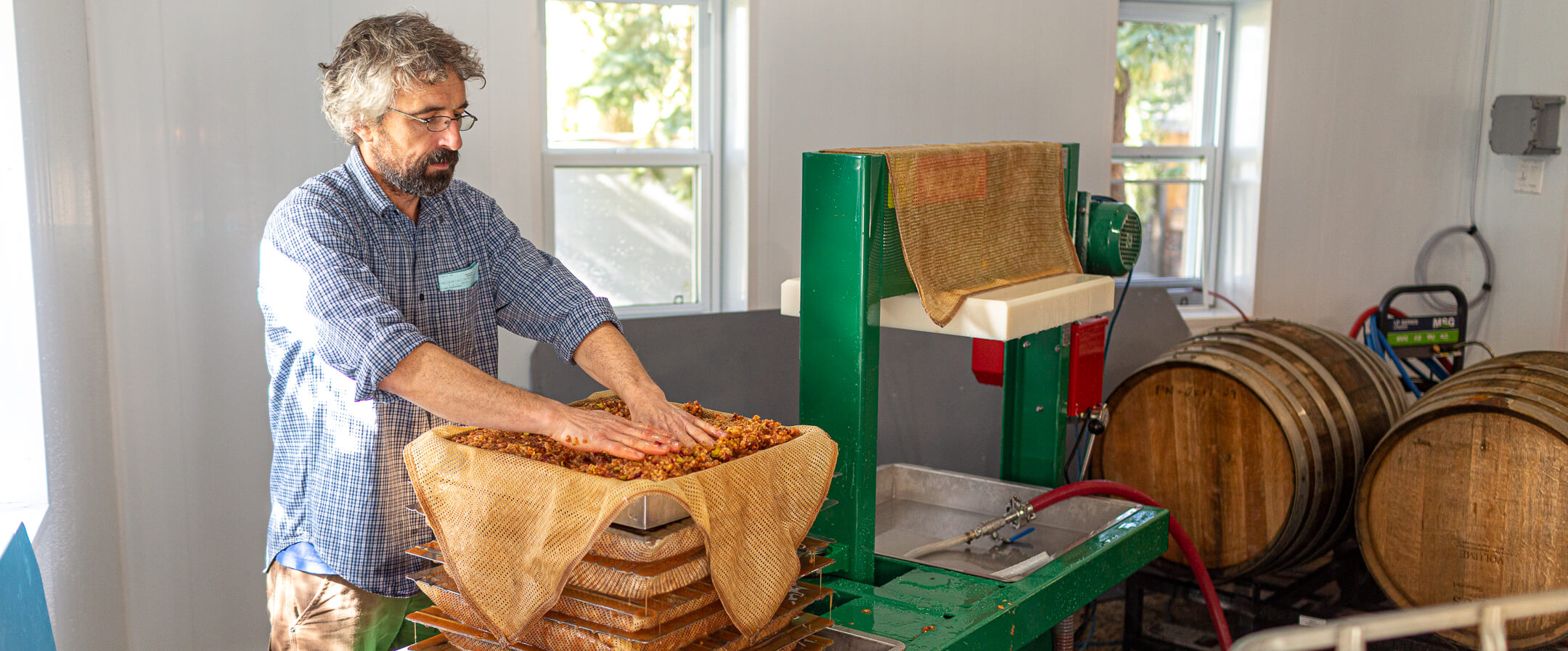
For his specialty batches, Frédéric from Cidrerie Chemin des Sept uses a hydraulic vertical press, which extracts the juice slowly, allowing them to stop and start - giving them full control of the clarity of the juice.
From virtually limitless varieties, cider makers sort their apples by hand before crushing their selection. The crushed fruit is then pressed, extracting as much juice as possible leaving only skins, pulp, seeds, and stems - also called marc.
Settling, fermenting, racking, and filtering.
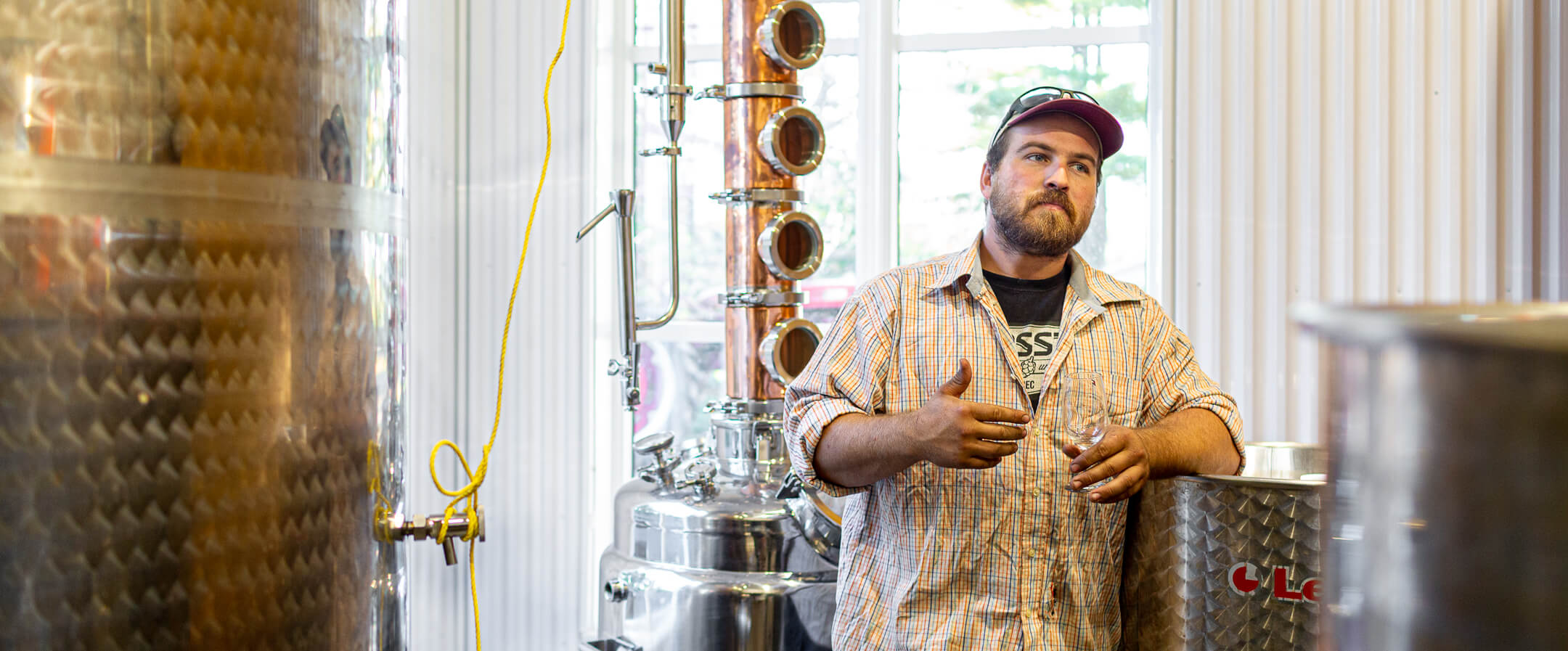
Before crushing or pressing, Marco at Ferme Cidricole Équinoxe macerates their apples in a vat, to develop strong fruity aromas.
Next come the steps that add uniqueness to each brew, starting with settling - a rest period allowing the solids to chill at the bottom of the tank. Then, thanks to the yeast naturally found on the peel or added manually, the cuvée (a term meaning vat or tank) begins to ferment by transforming sugar into alcohol.
During the racking step, the cider’s passed from the first vat to the second without disturbing the lees (what’s fallen to the bottom), before being filtered using something fine enough to capture anyall the particles. Most cideries will follow an extra step, mixing together several cuvées - an optional and subjective step depending on the taste goals.
Aging and bottling.
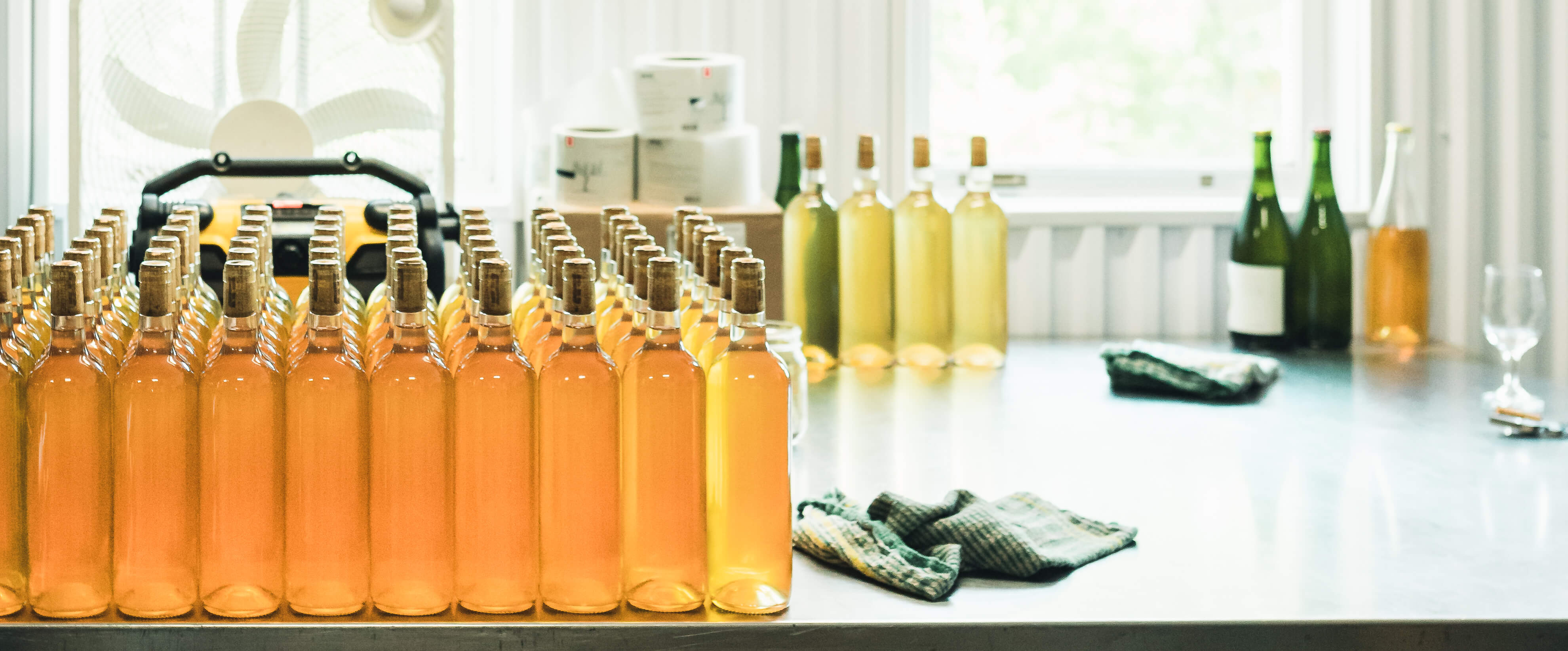
Recently, Cidre Choinière got creative and started aging ciders on grape marc before bottling to increase aromatization.
Before bottling, our partners might choose to flavour their ciders using fruits, aromatics, or letting it age for longer. When it comes to sparkling ciders, there are two main techniques: natural and pressurized. The former naturally transforms sugar into carbon dioxide trapped in sealed bottles and the latter adds it manually.
At the end of the day, the cider makers themselves have the final say based on personal taste and preference.
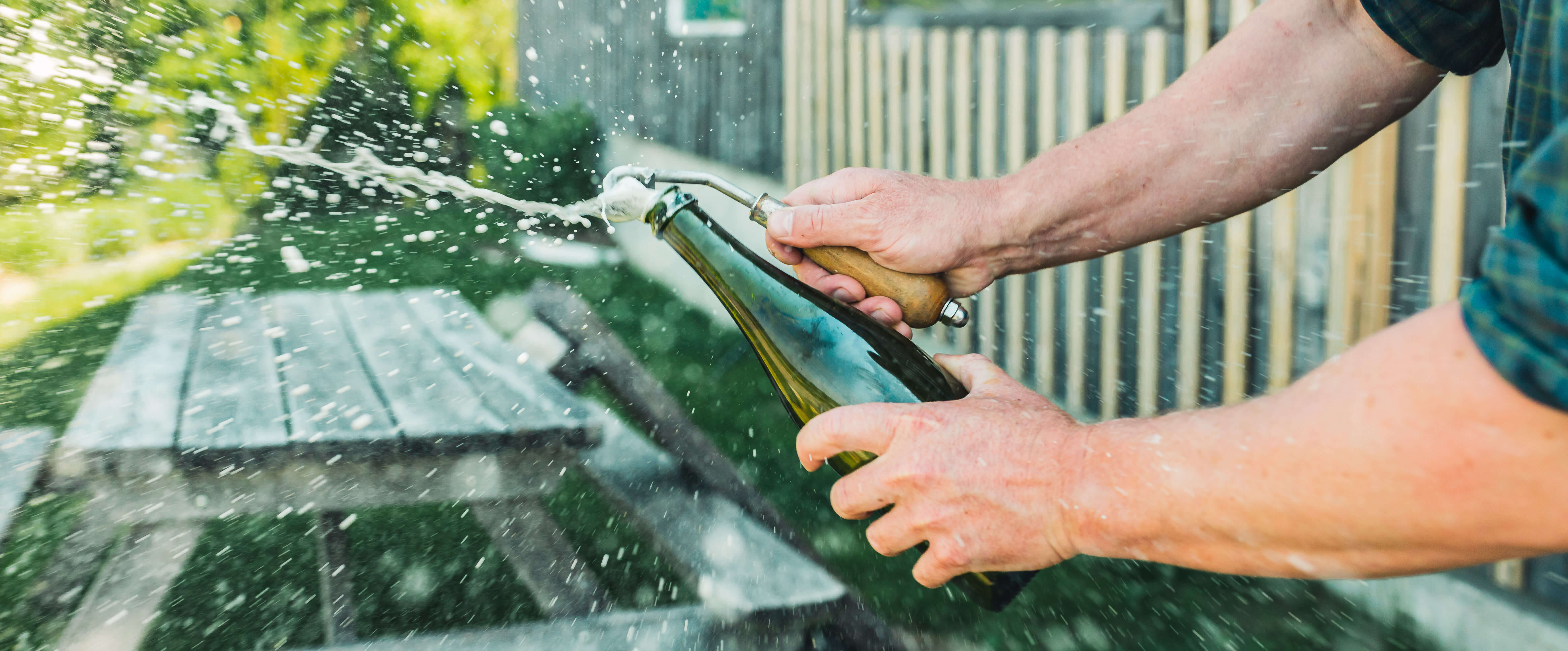
Cheers to choosing our ciders based on the origin of the apples and the sustainable methods of local cider houses!
